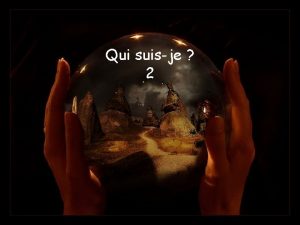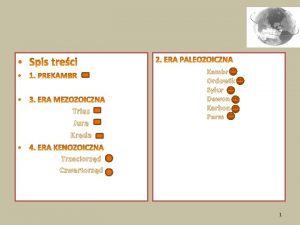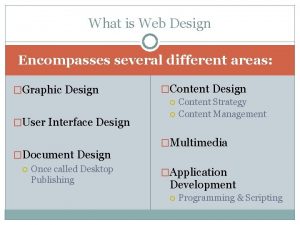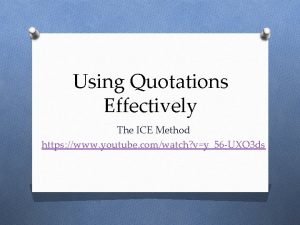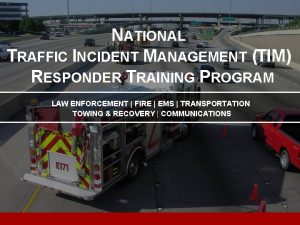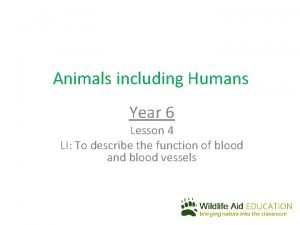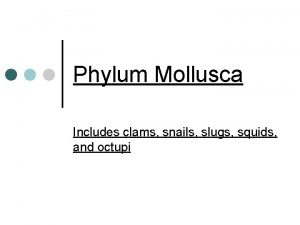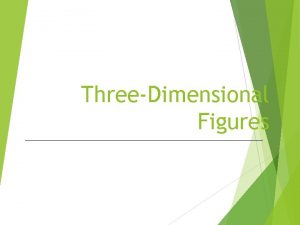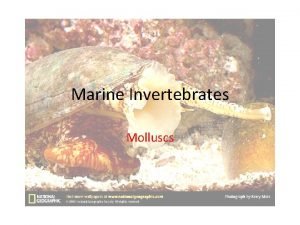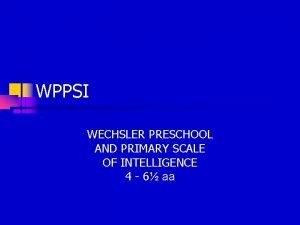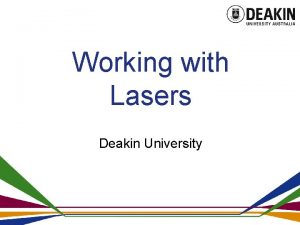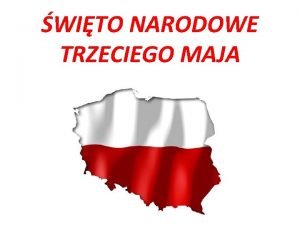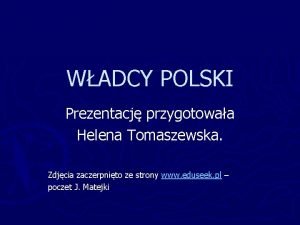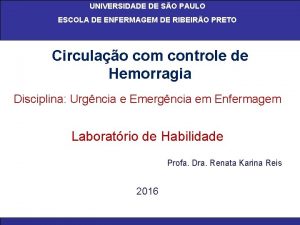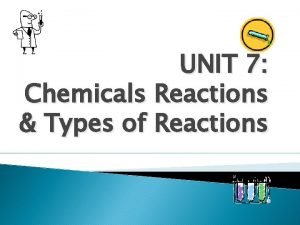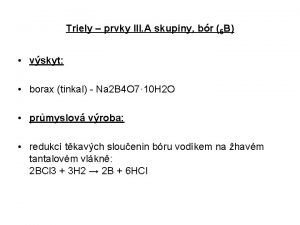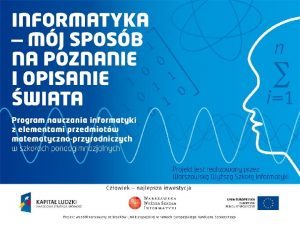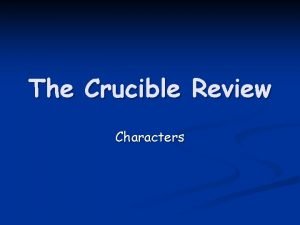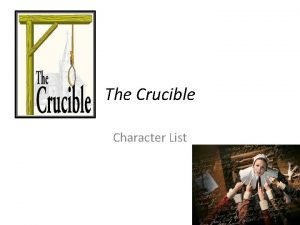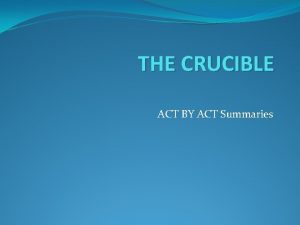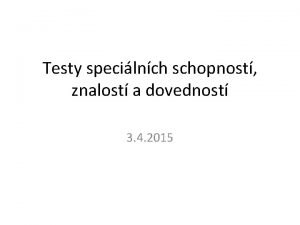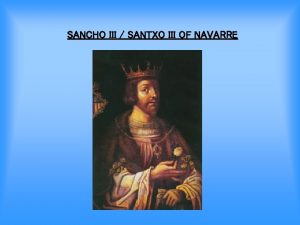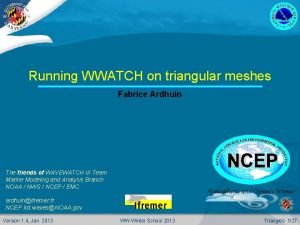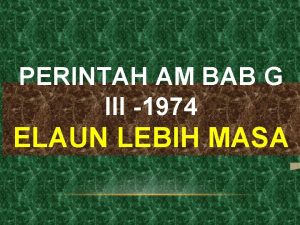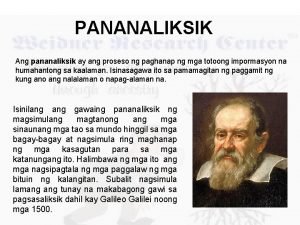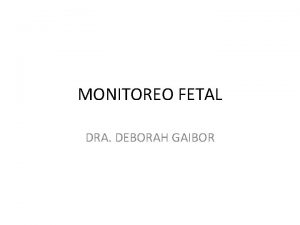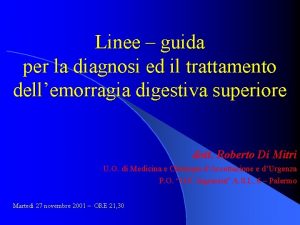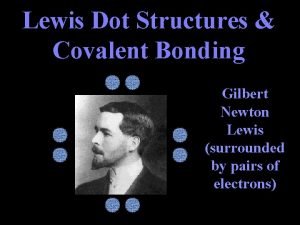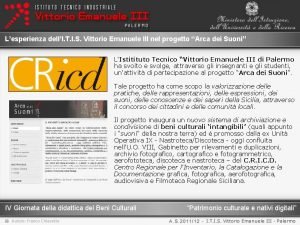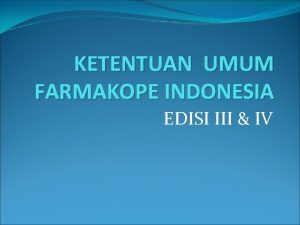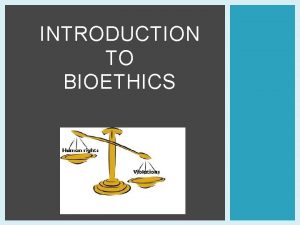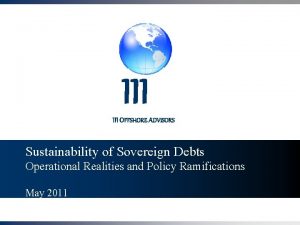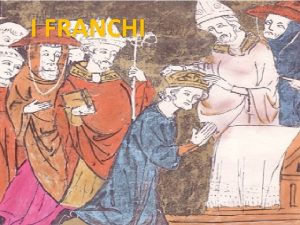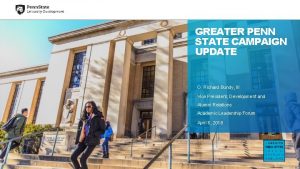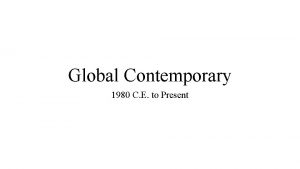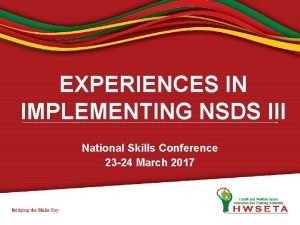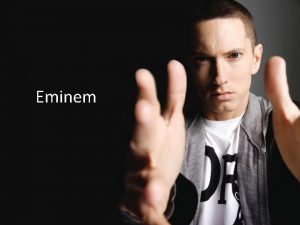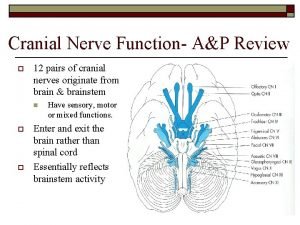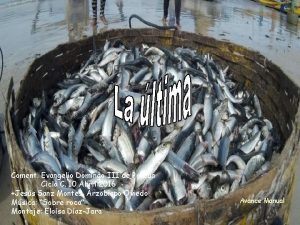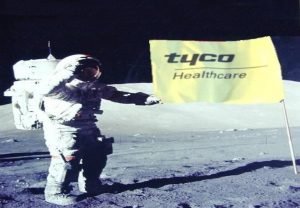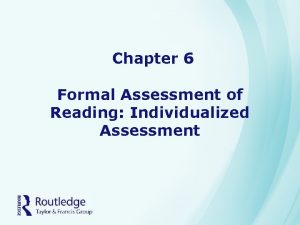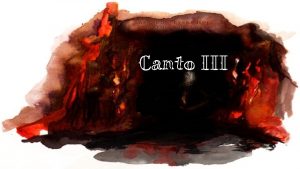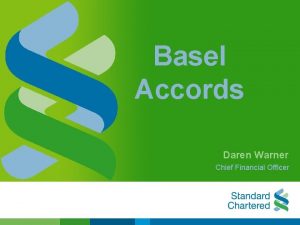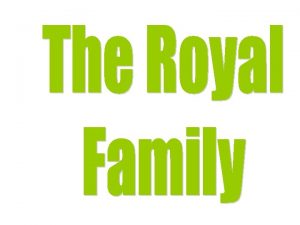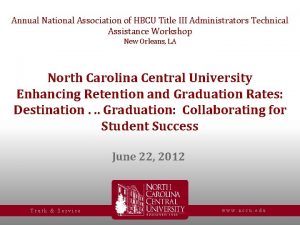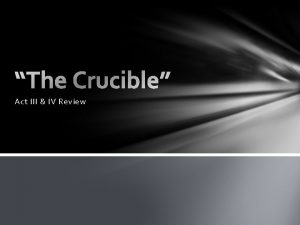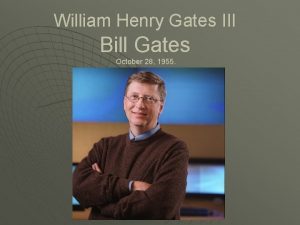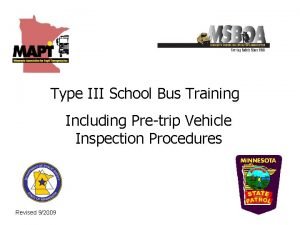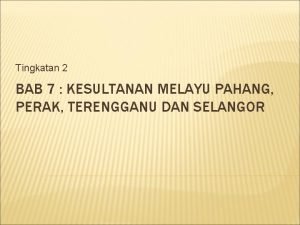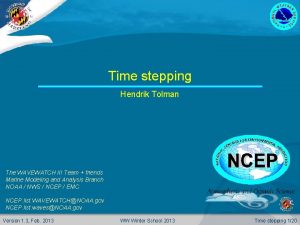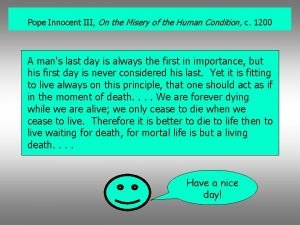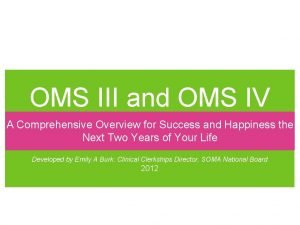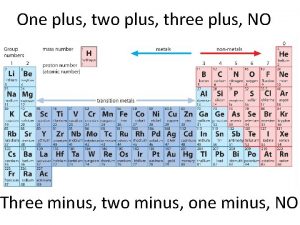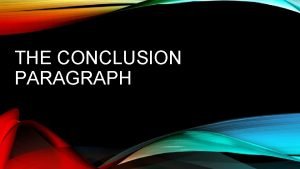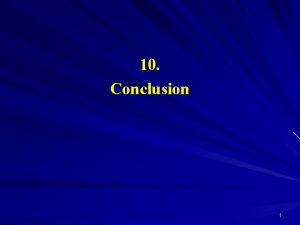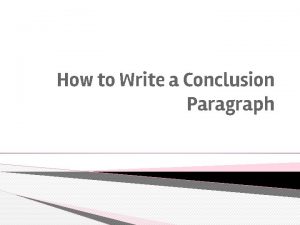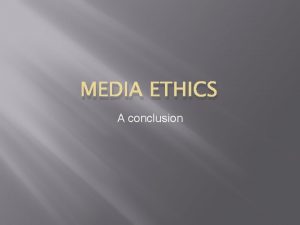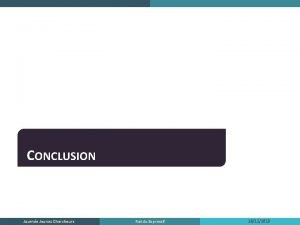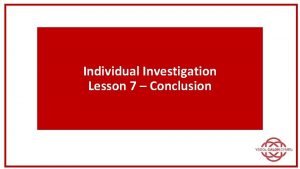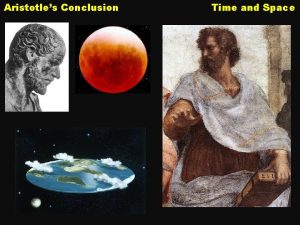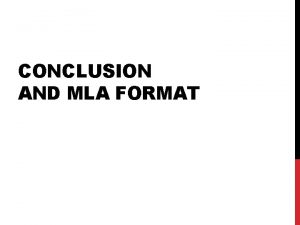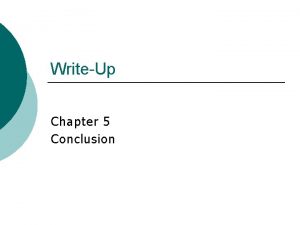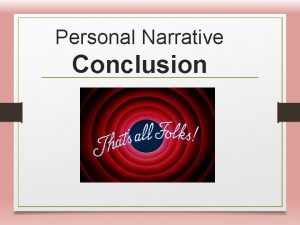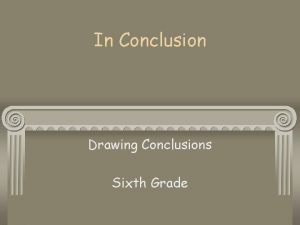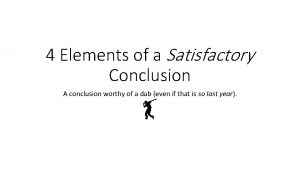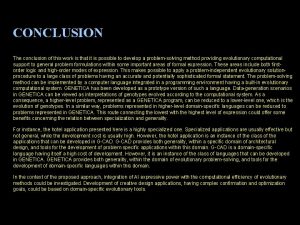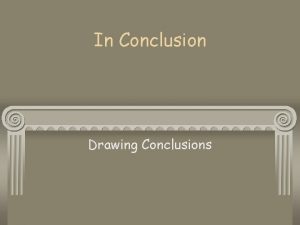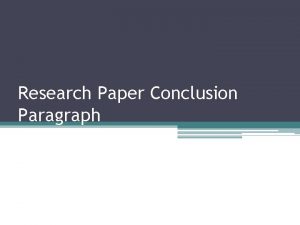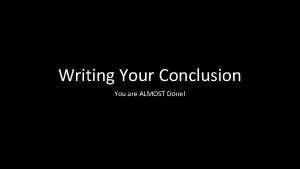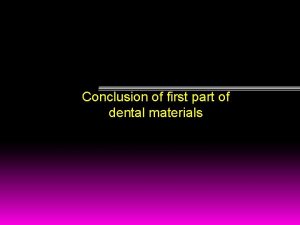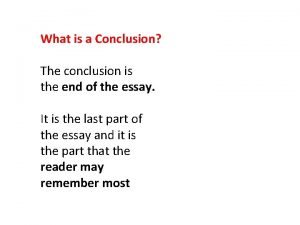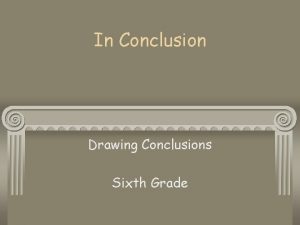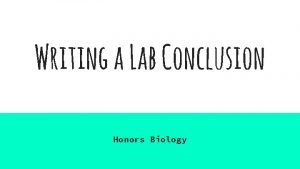Week 29 Unit III conclusion including plus district












































































































- Slides: 108

Week 29 Unit III conclusion, including plus district writing assessments April 2 -6, 2018

Why are we here this week? Students will collaborate & interpret Flow of History in the Cold War #140. Students will confirm completion of assignments related to the early Cold War (Ch. 37 -40 in History Alive & FC 138 -139 -140). Students will complete a QUIZ on the Cold War if NOT completed on 3/27. Students in Academic will prepare for Unit III exam & upcoming core essay on American Ideals Honors-level students will display annotations & analysis of 10 Cold War documents & complete organizer in preparation for DBQ essay

Homework: Complete CORE essay organizer Academic: Prepare for Unit III Exam on Wed. 4/4/18 Looking back on your LIFE so far, LIST or DESCRIBE five chapters of your Monday, April 2, 2018 autobiography. I. PERSONAL Work Time Quiz? American Ideals Essay Thur. 4/5/18 PAST DUE work: HA 37 -40, FC 138 -140 II. Flow of History Chart #140:

TIME LIFE Looking back on your LIFE so far, LIST or DESCRIBE five chapters of your autobiography.

Homework: Complete DBQ organizer & prepare to write essay Monday, April 2, 2018 I. Looking back on your LIFE so far, LIST or DESCRIBE five chapters of your autobiography. PERSONAL Work Time Quiz? Cold War DBQ Wed. 4/4/18 PAST DUE work: HA 37 -40, FC 138 -140 II. Flow of History Chart #140:

Conversation Piece PLEASE utilize the TIME I will spend visiting your group to TALK with me about… Cold War QUIZ: DONE? If not, when? (LUNCH or Resource today…CLASS Tuesday) HA 37 -40 notes? FC 138 -140? OTHER past work? ACADEMIC: Unit III Exam: study guides (written & note version on teacher website)? American Ideal essay: organizer done? Ready to write?

Conversation Piece PLEASE utilize the TIME I will spend visiting your group to TALK with me about… Cold War QUIZ: DONE? If not, when? (LUNCH or Resource today…CLASS Tuesday) HA 37 -40 notes? FC 138 -140? OTHER past work? HONORS: Cold War DBQ essay: Documents annotated & analyzed? Check on Tuesday, 4/3 (20 minor pts) Read “A Decade of Fear? ” Organizer done? Should be “completed” by the end of class on Tuesday, but no later than Wednesday, 4/5 Ready to write?

Homework: Unit III exam is tomorrow (review/complete study guides) Tuesday, April 3, 2018 I. Looking back on the FIVE CHAPTERS of your autobiography, what were some of your struggles? FC 140: Early Years of the Cold War II. Assessment WORK Time Quiz if NOT done…SCL? American Ideals Core Essay Prep Complete CORE essay organizer for Thur. 4/5 Unit III Exam PREPARATIONS

Homework: Complete DBQ CORE essay organizer Tuesday, April 3, 2018 Looking back on the FIVE CHAPTERS of your autobiography, what were some of your struggles? I. FC 140: Early Years of the Cold War II. Assessment (Prep) Time Quiz if NOT done…SCL? Cold War DBQ Preparations

How do events in Europe and Asia compare during the early years of the Cold War? http: //www. fl owofhistory. co m/readingsflowcharts/the -world-since 1945/the-postwar-world 1945 -60/fc 140 Explain at least TWO SPECIFIC THINGS that illustrate how the conflict was DIFFERENT in Europe compared to ASIA How many “packet terms” are in this flowchart?

FC 140: The Early Cold War (1948 -53) The Cold War in Europe (1948 -55) The first Cold War crisis was over Germany, through which the victors had drawn the line of demarcation between Soviet and Western spheres of influence in 1945. France, Britain, and the United States held the Western two-thirds of Germany, while Russia held the eastern third. At first this division was meant to be temporary with a permanent settlement to be hammered out in the future. But Stalin and the Western allies were soon at odds over the fate of Germany. Stalin wanted it to be Communist and the Western allies wanted it to be Capitalist and democratic. In 1948, the United States and its allies made several moves that led to a crisis: a military and economic alliance that was aimed against a resurgent Germany but which Stalin thought was against him, the Marshall Plan to stop the spread of Communism, the unification of the three western sectors into what would become West Germany, and the introduction of a new currency to stabilize the German economy. Stalin kept this new currency out of his sector and tried to introduce his own currency into the West. The allies responded by keeping his currency out of the West. Stalin, sensing a resurgent West German economy and fearing that this might threaten his dominance in East Germany and Eastern Europe, raised the stakes in what is known as the Berlin Crisis. Berlin, which itself lay deep inside East Germany, was divided between the allies in much the same way as the rest of Germany. The Western allies had access to West Berlin through three land corridors and three air corridors. Therefore, West Berlin was quite vulnerable to Soviet pressure, and that is where Stalin struck. On June 24, Stalin started cutting off utilities and the flow of traffic and supplies along the three land corridors leading into West Berlin. This presented the Western Allies with a difficult choice. If they abandoned West Berlin to its fate and let Stalin have his way, it would encourage more aggression that might lead to war just as a similar sort of appeasement had done in 1939. By the same token, crashing the Soviet blockade could lead to war just as similar acts of aggression had done in 1914. The Allied solution was tedious but ingenious: an airlift of supplies into West Berlin. This would supply West Berlin while using three-dimensional air space that could not be blockaded. It was a classic case of brinkmanship, since stopping the airlift would require shooting down American and British planes, which might provoke a war. Since the United States had the Atomic bomb and he did not (at least until the following year), Stalin did not want to risk a war with the United States. Therefore, he let the planes go, hoping the British and Americans would get tired of this whole costly operation. They did not. For nearly eleven months, they kept up the round-the-clock flights that were only 30 seconds apart, taking in supplies and taking out some 50, 000 sick, elderly, and very young people. Besides food and medical supplies, they also took in cars, heavy machinery, and even Clarence the Camel, a defiant symbol to Stalin that the Western Allies could bring anything they wanted into West Berlin.

FC 140: The Early Cold War (1948 -53) The Cold War in Europe (1948 -55) (CONTINUED) Each succeeding day of the airlift embarrassed Stalin with proof of the West's technical ability to pull off such a feat. After eleven months, he lifted the blockade. The Berlin airlift had saved West Berlin. It had involved 276, 926 flights that brought in 1, 592, 287 tons of supplies at the cost of 24 air crashes and 79 lives. The importance of the Berlin Crisis was that it stopped further Stalinist aggression in Europe. The same month that the blockade was lifted (May, 1949), West Germany was formed as a parliamentary democracy. The Berlin crisis prompted two rival alliances led respectively by the United States and Soviet Union. In 1949 the North Atlantic Treaty Organization (NATO) was formed between the United States, Britain, France, Belgium, the Netherlands, Luxembourg, Greece (1952), and Turkey (1952). It was mainly a defensive alliance to stop Soviet aggression by hemming it in to the west and south. In 1954, the NATO allies, in need of manpower and firepower to combat the Soviets, allowed West Germany to rearm itself and admitted it to NATO. Outside of the United States, the West German army became the biggest and best-trained army in NATO. A similar alliance, the South East Asia Treaty Organization (SEATO) was formed in 1954 between the United States, Britain, France, Pakistan, Australia, New Zealand, Thailand, and the Philippines to contain the Soviets and Communists to the south and east. A third alliance, the Mideast Treaty Organization (1955) completed the ring of hostile powers on Russia's borders to the south. These alliances proved to be less stable and reliable than NATO, but they did ring the Soviet Union with unfriendly alliances, which alarmed its leaders. In response to this threat, Russia formed the Warsaw Pact in 1955 with its satellite states in Eastern Europe: East Germany, Czechoslovakia, Romania, Hungary, Bulgaria, and Albania. Making this threat much more potent was the fact that the Soviets now had nuclear weapons of their own. In the following years, Britain, France, China, and India all would join the "nuclear club" and develop their own nuclear arsenals. Therefore, by the mid 1950's, distinct battle lines had been drawn in Central Europe. Armies which people expected to be demobilized and sent home in 1945 remained in place for nearly a half century, draining their countries' economies, turning Central Europe into an armed camp, and presenting the constant threat of war, which this time would probably be accompanied by a devastating nuclear exchange. Whole generations grew up under the ominous cloud of this atomic umbrella, acutely aware that the next war might well be the last for the human race.

FC 140: The Early Cold War (1948 -53) The struggle widens: East Asia (1945 -53) World War II had been a truly global war, especially involving Europe's colonial empires in Asia. By the mid twentieth century, the areas outside of Europe loomed much larger in importance as they shook off Europe's grip and started developing on their own economically and politically. Japan had led the way since the late 1800's, and its early success against the European colonial powers inspired others in Asia to challenge European supremacy as well. One such country was China, whose civil war between the Communists led by Mao Zedong and the Nationalists led by Chiang Kaishek had been interrupted by World War II. That civil war resumed right after Japan's defeat. Although the Nationalists started out with more men and resources, the Communists were better led and disciplined and had Soviet help. By 1949, the Communists emerged victorious, and the West found itself confronted by another Communist power that was heavily backed by the Soviet Union. The ensuing clash between Communist East and Capitalist West came in a third country: Korea. The victorious Americans and Soviets partitioned Korea, which had been occupied by Japan since the early part of the century, after the war at the thirty-eighth parallel. Soviet dominated North Korea became Communist; while American backed South Korea was capitalist and democratic in form. In 1950, North Korean forces invaded South Korea and overran most of it. This crisis brought to the forefront the fledgling United Nations, founded in 1945 in the recurring hope that such an international organization could help defuse conflicts and safeguard the peace. The members of its main executive body, the Security Council, each had the power to veto any proposed actions. As luck would have it, when the Security Council met to discuss the Korean crisis, the Soviets boycotted its meeting. This allowed the United States to pass a resolution calling for an international force to stop the North Koreans. The bulk of this force consisted of American troops led by General Douglas Macarthur. With the United Nations forces barely hanging on to a toehold in the south, Macarthur landed an amphibious invasion behind North Korean lines and drove them back north. When the U. N. forces advanced dangerously close to the Chinese border in the North, Chinese forces entered North Korea and drove them back south. What ensued was a long bloody stalemate that ended with a ceasefire at the original border, the thirty -eighth parallel. The Korean War had two major results. For one thing, it contained the spread of Communism, but at the cost of a divided Korea and the loss of millions of lives and untold material damage. It also affected Japan where the United States was worried about the further spread of Communism and Soviet power into East Asia. Feeling that poor and unstable conditions created the ideal conditions for the spread of, the United States decided to provide Japan with economic aid to help it revive. As a result, Japan's prosperity and stability rapidly recovered, making it a strong ally and trading partner for the United States. However, by the 1980's, Japan' was seriously challenging American dominance of world trade.

U. S. History 9 Core I Essay Overview: In history, themes develop over time. One can argue that the developments of these themes have brought America closer to the ideals that the U. S. was founded upon, while others have brought us further from those ideals. The following essay prompt deals with these ideals: Prompt: “Explain how the United States has moved closer to or further from America’s founding ideals throughout the time period of 1890 -1945. Choose three specific examples from history to explain and support your position. ”

American Ideals Core Essay You can only argue in one direction, but you can relate it to any of the founding ideals. Equality Rights Liberty Opportunity Democracy Steps: 1. Choose three historical examples that you can explain from Units I, II, or III. (These could be specific events, laws/acts that were passed, actions taken by the U. S. government, etc. ) 2. For the three examples, decide which founding ideals they relate to and explain whether the example brought the U. S. closer to or further from that ideal based on which direction you chose. You can only argue in one direction!!!!!!!


CORE Essay for Periods 1 & 4 Essay written in class this THURSDAY, 4/5! IF you are STRUGGLING… Students will write about one of the following themes & answer the prompt (BELOW): role of government America's changing economy America's role in the world social equality in America Explain how the development of one of themes (above) has moved us closer to or further from America’s founding ideals (equality, rights, liberty, opportunity, & democracy). Answers should address the time period of 1890 s to the 1940 s. Students should use at least three specific examples from history to support their position. An organizer/outline may be used, but no pre-written essays are allowed . You must be prepared to write your essay this week!

9 th Grade Core Essay Question Essay written in class this week! Students will write about a theme (role of government…America's changing economy…America's role in the world… OR…social equality in America) while answering the following prompt: Explain how the development of one of themes (above) has moved us closer to or further from America’s founding ideals (equality, rights, liberty, opportunity, & democracy). Answers should address the time period of 1890 to 1940. Students should use at least three specific examples from history to support their position. An organizer/outline may be used, but no pre-written essays are allowed. a. How did the *role of government change between 1890 -1940 s? Have our nation's ideals improved or worsened? b. How did America's economy* change between 1890 -1940 s? Have our nation's ideals improved or worsened? c. How did America's *role in the world change between 1890 -1940 s? Have our nation's ideals improved or worsened? d. How has **social equality changed in America between 1890 -1940 s? Have our nation's ideals improved or worsened? Did you SELECT a specific essay theme *& “brainstorm” ideas ? Did you write a thesis & IDENTIFY 3 specific examples to write about? Did you complete your organizer (filled with facts) & transitions?

Introduction: Set the “stage” and write a strong, declarative thesis statement. Include a preview of your examples that you will write about to PROVE that America was making progress or moving in the wrong direction. Body Paragraphs (3): Explain how each historic example supports your view. Prove your thesis by including background information & specific details that explain HOW the American ideals were affected by each example. Conclusion: Convincingly reinforce your thesis and BRIEFLY review your examples/main points.

Review sample essays today! • Now, let’s write a STRONG THESIS statement… • Did you review The Americans and/or History Alive! in search of additional FACTS & DETAILS about your 3 chosen historic examples…Did or WILL YOU fill your organizer/outline?

How to Tell a Strong Thesis Statement from a Weak One 1. A strong thesis statement takes some sort of stand. American Ideals (e, r, l, o, d): Remember that your thesis needs to show your conclusions about a subject. better or worse between 1890 s 1940 s? Ex. Because Banana Herb Tea Supplement promotes rapid weight loss that results in the loss of muscle and lean body mass, it poses a potential danger to customers. This is a strong thesis because it takes a stand, and because it's specific. Share & discuss your thesis statement in groups… 2. A strong thesis statement justifies discussion. Your thesis should indicate the point of the discussion. A good strategy for creating a strong thesis is to show that the topic is controversial. Readers will be interested in reading the rest of the essay to see how you support your point. theme/question: role of government? changing economy? US role in the world? social equity? 3. A strong thesis statement expresses one main idea. Readers need to be able to see that your paper has one main point. Hint: a great many clear and engaging thesis statements contain words like because, since, so, although, unless, and however. 3 detailed historic examples illustrating your view: explain how these support your thesis statement! 4. A strong thesis statement is specific. A thesis statement should show exactly what your paper will be about, and will help you keep your paper to a manageable topic. A strong thesis statement narrows the subject to a more specific and manageable topic, and it also identifies the specific effects on American ideals between 1890 s-1940 s.

Did you fill in your selected theme? Did you write a clear thesis statement, including a preview of your three historic examples from 1890 -1940 s, showing that America has moved closer to (or further from) its founding ideals? Social equality has changed a lot between 1890 -1940. I believe that the improvements in social equality have brought America closer to the founding ideals of equality, rights and opportunity. Equality was the ideal that had improved the most. The Founding Fathers based this country on the ideals of equality, opportunity, democracy, liberty, and rights. At the start of our country, these ideals were simple and very lenient one might say. However, in the time between 1890 -1940, America was brought closer to these ideals in the category of Social Equality. Some examples of how we have improved include but are not limited to: Women’s suffrage, the Harlem Renaissance, and how Roosevelts New Deal affected the people in America.

Name: How did (has) change(d) between 1890 -1940? Have our nation's ideals improved or worsened? Introduction, including thesis & preview of three examples State your THESIS statement and preview your 3 historic examples. T R A N S I T I O N S E N T E N C E S ? Paragraph 1 historic example #1 explained with details that support & prove your thesis Paragraph 2 historic example #2 explained with details that support & prove your thesis Paragraph 3 historic example #3 explained with details that support & prove your thesis Conclusion, reinforce thesis & summarize examples Reemphasize your THESIS statement & reiterate the value/meaning of your 3 historic examples

Introduction, including thesis & preview of three examples State your THESIS statement and preview your 3 historic examples. Paragraph 1 historic example #1 explained with details that support & prove your thesis T R A N S I T I O N S E N T E N C E S ? Opportunity is the freedom of choice, what allows people to choose for their selves. One example of America moving closer to the founding ideal of opportunity is the Great Migration. The Great Migration was the moving of African Americans from South to North and West. This was a very important part of American and African. American history because the African-Americans could make a living in the cities of the north and west. This connects to the ideal of opportunity because there were more opportunities for African-Americans to succeed in the North. When the Spanish American War was beginning in 1898, America was very interested in Cuba and other Spanish colonies. They were eager to join and support the Cuban Revolution, and the public opinion was turned towards war due to the birth of yellow journalism and other halftruths. After the “splendid little war” had ended just a few months later, America abused its power, having troops continue to occupy Cuba, and not truly liberating them. The U. S. insisted Cuba revise its new constitution allowing more control to the States, and refused to withdraw their army until it was done. Both the Philippines and Puerto Rico were given to the United States. Puerto Rico asked for a self-government, and the Filipinos often compared the U. S. A. to Spain. America blatantly disregarded South American liberties, moving away from its ideals, and towards imperialism and domination over smaller countries and people.

Name: How did (has) change(d) between 1890 -1940? Have our nation's ideals improved or worsened? Introduction, including thesis & preview of three examples State your THESIS statement and preview your 3 historic examples. Paragraph 1 T R A N S I T I O N S E N T E N C E S ? historic example #1 explained with details that support & prove your thesis Paragraph 2 historic example #2 explained with details that support & prove your thesis Paragraph 3 historic example #3 explained with details that support & prove your thesis The Red Scare pitted Americans against immigrants, especially those who were suspected communists, radicals, anarchists. Rights of immigrants were stripped, and there were hundreds of deportations without trial or fair trial. Conclusion, reinforce thesis & summarize examples Reemphasize your THESIS statement & reiterate the value/meaning of your 3 historic examples In conclusion, our country has been based off of the same ideals, democracy, liberty, rights, equality, and opportunity. These ideals as well as our government pushed our country in the right direction and keeps it in line. The government has moved closer to the founding ideal of democracy because of Franklin Roosevelt’s New Deal and women suffrage. Both of these events increased the amount of democracy in our country only making us stronger. In addition to democracy the government has also moved closer to the founding ideal of equality because of the women in the 1920 s. The United States government has changed significantly and continues to change as we experience different presidents and move closer to our founding ideals.

How to Tell a Strong Thesis Statement from a Weak One 1. A strong thesis statement takes some sort of stand. Remember that your thesis needs to show your conclusions about a subject. For example, if you are writing a paper for a class on fitness, you might be asked to choose a popular weight-loss product to evaluate. Here are two thesis statements: There are some negative and positive aspects to the Banana Herb Tea Supplement. This is a weak thesis statement. First, it fails to take a stand. Second, the phrase negative and positive aspects is vague. Because Banana Herb Tea Supplement promotes rapid weight loss that results in the loss of muscle and lean body mass, it poses a potential danger to customers. This is a strong thesis because it takes a stand, and because it's specific.

How to Tell a Strong Thesis Statement from a Weak One 2. A strong thesis statement justifies discussion. Your thesis should indicate the point of the discussion. If your assignment is to write a paper on kinship systems, using your own family as an example, you might come up with either of these two thesis statements: My family is an extended family. This is a weak thesis because it merely states an observation. Your reader won’t be able to tell the point of the statement, and will probably stop reading. While most American families would view consanguineal marriage as a threat to the nuclear family structure, many Iranian families, like my own, believe that these marriages help reinforce kinship ties in an extended family. This is a strong thesis because it shows how your experience contradicts a widely-accepted view. A good strategy for creating a strong thesis is to show that the topic is controversial. Readers will be interested in reading the rest of the essay to see how you support your point.

How to Tell a Strong Thesis Statement from a Weak One 3. A strong thesis statement expresses one main idea. Readers need to be able to see that your paper has one main point. If your thesis statement expresses more than one idea, then you might confuse your readers about the subject of your paper. For example: Companies need to exploit the marketing potential of the Internet, and Web pages can provide both advertising and customer support. This is a weak thesis statement because the reader can’t decide whether the paper is about marketing on the Internet or Web pages. To revise thesis, the relationship between the two ideas needs to become more clear. One way to revise thesis would be to write: Because the Internet is filled with tremendous marketing potential, companies should exploit this potential by using Web pages that offer both advertising and customer support. This is a strong thesis because it shows that the two ideas are related. Hint: a great many clear and engaging thesis statements contain words like because, since, so, although, unless, and however.

How to Tell a Strong Thesis Statement from a Weak One 4. A strong thesis statement is specific. A thesis statement should show exactly what your paper will be about, and will help you keep your paper to a manageable topic. For example, if you're writing a seven-to-ten page paper on hunger, you might say: World hunger has many causes and effects. This is a weak thesis statement for two major reasons. First, world hunger can’t be discussed thoroughly in seven to ten pages. Second, many causes and effects is vague. You should be able to identify specific causes and effects. A revised thesis might look like this: Hunger persists in Glandelinia because jobs are scarce and farming in the infertile soil is rarely profitable. This is a strong thesis statement because it narrows the subject to a more specific and manageable topic, and it also identifies the specific causes for the existence of hunger.


Prepare to WRITE a QUALITY essay! • Review The Americans and/or History Alive! in search of additional FACTS & DETAILS about your 3 chosen historic examples… • Complete organizer/outline & prepare to WRITE essay on Thursday using only organizer!

ACADEMIC ONLY Unit III “Need to Know” Isolationism vs. Interventionism Mobilization for WWII Lend-Lease & Pearl Harbor Changes on the Homefront Japanese Internment Experiences of Women & African Americans World War II casualties & strategies Decision to Drop the Atomic Bomb Rise of Superpowers Containment Policy, Berlin Airlift, Korean War Red Scare & Mc. Carthyism Nuclear weapons & Atomic Age District Exam #3 is planned for Tuesday, March 27… Your essay writing day is planned for Monday, March 26…. Your final Unit III QUIZ is planned for Friday, March 23… ALL dates are “flexible”

Unit III: Essential Questions • When should the United States go to war? • What is required to achieve victory in war? • What impact do challenges abroad have on Americans at home? • Did America’s development as a super power move it closer or further away from its founding ideals? Did you complete the Unit III study guide?

HONORS DBQ

Advanced 9 th Grade US History Document-Based Question Early Cold War Question: Some historians argue that the United States exaggerated the threat of communism, while others argue that American containment prevented a global communist revolution. Utilize the documents below to defend either of these two arguments. Requirements: Demonstrate knowledge acquired in class, through homework and from outside sources. Use as many of the documents included with this DBQ as you can. Write clearly and use proper language. Make sure your thesis is clear. Use historical examples to support your generalizations. Your response should fully address the prompt and support thesis. READ and ANALYZE the following documents in search of the following: 1) “message: ” What does this source indicate about the nature of the Cold War? Does the CONTENT reveal that the U. S. acted appropriately or inappropriately? Does the CONTENT show that the U. S. S. R. was a real threat or exaggerated threat? 2) “usage: ” How can you use this document’s message(s) to show that the U. S. acted appropriately or inappropriately during the Cold War? What message(s) support you OPINION that the U. S. needed to stop a global communist takeover OR that it overreacted to the Soviet Union?

Document A Franklin Delano Roosevelt to Ambassador to USSR, William C. Bullitt 1943 Who are the people involved? William C. Bullitt, "How We Won the War and Lost the Peace, " Life, August 30, 1958, p. 94. What kind of communication is this? Setting the stage for the debates over Soviet intentions at the Yalta Conference in 1945, William C. Bullitt, a former ambassador to the USSR and to France, submitted a memorandum to Roosevelt in August 1943 in which he suggested obtaining Stalin's pledge for a renunciation of conquest in Europe and recommended a military advance from the south through Eastern and Central Europe. FDR, who felt he could "handle" Stalin, responded: What historical concepts & vocabulary words must I “know” or research in order to UNDERSTAND this document? “I just have a hunch that Stalin. . . doesn't want anything but security for his country, and I think that if I give him everything I possibly can and ask nothing from him in return, noblesse oblige, he wouldn't try to annex anything and will work with us for a world of democracy and peace. ” How can you use this document to respond to the DBQ question? • Does it show the view that America acted appropriately and prevented a communist takeover? Does it show that America overreacted in the face of the communist threat? Can it be used by both sides of the argument? EXPLAIN

Document B Henry Luce, The American Century, 1941 "The American Century" by Henry R. Luce. Life magazine, Feb. 17, 1941. © 1941 Time, Inc. • Henry R. Luce was the founder and publisher of the magazines Time, Life, Fortune, and later Sports Illustrated. "The American Century" appeared in Life magazine just before the bombing of Pearl Harbor and America's official entry into World War II. It's most famous passages presage the internationalism of the post-war period. In the field of national policy, the fundamental trouble with America has been, and is, that whereas their nation became in the 20 th Century the most powerful and the most vital nation in the world, nevertheless Americans were unable to accommodate themselves spiritually and practically to that fact. Hence they have failed to play their part as a world power–a failure which has had disastrous consequences for themselves and for all mankind. And the cue is this: to accept wholeheartedly our duty and our opportunity as the most powerful and vital nation in the world and in consequence to exert upon the world the full impact of our influence, for such purposes as we see fit and by such means as we see fit… As America enters dynamically upon the world scene, we need most of all to seek and to bring forth a vision of America as a world power which is authentically American and which can inspire us to live and work and fight with vigor and enthusiasm… But all this is not enough. All this will fail and none of it will happen unless our vision of America as a world power includes a passionate devotion to great American ideals. We have some things in this country which are infinitely precious and especially American–a love of freedom, a feeling for the equality of opportunity, a tradition of self-reliance and independence and also of co-operation. In addition to ideals and notions which are especially American, we are the inheritors of all the great principles of Western civilization–above all Justice, the love of Truth, the ideal of Charity…It now becomes our time to be the powerhouse from which the ideals spread throughout the world and do their mysterious work of lifting the life of mankind from the level of the beasts to what the Psalmist called a little lower than the angels.

Document C Winston S. Churchill, The Iron Curtain Speech, Fulton, Missouri 1945 From the Congressional Record, 79 th Cong. , 2 nd sess. , 1945 -46, 92: A 1145 -47 • Winston S. Churchill was no longer British Prime Minister on March 5, 1946, when he made his frank " iron curtain" speech in Fulton, Missouri. While attracted to his candid anti-Soviet language, some critics pointed out that in condemning Russia for its influence in Eastern Europe, Churchill ignored British predominance in Greece and the empire. For some observers, Truman's presence on the platform signified American endorsement of Churchill's remarks. From Stettin in the Baltic to Trieste in the Adriatic, an iron curtain has descended across the Continent. Behind that line lie all the capitals of the ancient states of Central and Eastern Europe. Warsaw, Berlin, Prague, Budapest, Belgrade, Bucharest and Sofia, all these famous cities and the populations around them lie in what I must call the Soviet sphere, and all are subject in one form or another, not only to Soviet influence but to a very high and, in many cases, increasing measure of control from Moscow. . If now the Soviet Government tries, by separate action, to build up a pro-Communist Germany in their areas, this will cause new serious difficulties in the British and American zones, and will give the defeated Germans the power of putting themselves up to auction between the Soviets and Western Democracies. Whatever conclusions may be drawn from these facts -- and facts they are - this is certainly not the liberated Europe we fought to build up. .

Document D George E Kennan, The Long Telegram, 1946 Excerpted from U. S. Department of State, Foreign Relations of the United States, 1946 (Washington, D. C. , 1969), 6: 697 -99, and 701 -9. A diplomat in the U. S. Embassy in Moscow and a leading expert on Soviet affairs, George E Kennan sent a long, 8, 000 -word, secret telegram to the State Department early in 1946 sketching the roots of Soviet policy and warning of serious difficulties with the Soviet Union in the years ahead. The stilted language is the product of dropped words to shorten the telegram. Kennan recommended a long-term, firm policy of resistance by the United States to Soviet expansionism, known as "containment. " At bottom of Kremlin's neurotic view of world affairs is traditional and instinctive Russian sense of insecurity…[T]hey have learned to seek security only in patient but deadly struggle for total destruction of rival power, never in compacts and compromises with it… Agencies utilized [by the Soviet Union] for promulgation of policies on this plane are following: Inner central core of Communist Parties in other countries. . . tightly coordinated and directed by Moscow. . Rank and file of Communist Parties… National associations or bodies which can be dominated or influenced…These include: labor unions, Youth leagues, women's organizations, racial societies, religious societies, social organizations, cultural groups, liberal magazines, publishing houses, etc. International organizations which can be similarly penetrated through influence over various national components. Labor, youth and women's organizations are prominent among them. . . In summary, we have here a political force committed fanatically to the belief that with US there can be no permanent modus vivendi, that it is desirable and necessary that the internal harmony of our society be disrupted, our traditional way of life be destroyed, the international authority of our state be broken, if Soviet power is to be secure… Problem of how to cope with this force [is] undoubtedly greatest task our diplomacy has ever faced and probably greatest it will ever have to face. . I would like to record my conviction that problem is within our power to solve and that without recourse to any general military conflict. •

Document E • Harry Truman, Truman Doctrine Speech, 1947 In 1947 the democratic government of Greece was threatened by communist guerrillas believed to be receiving support from the Soviet Union. Facing financial problems and the decline of its empire, the British announced that they could no longer offer support to Greece and Turkey. Americans feared that this would leave Greece and perhaps Turkey open to Soviet domination. The Soviet Union had already taken steps to install communist governments in Poland, Rumania and Bulgaria — seemingly in violation of the Yalta Agreement which had called for free elections in these nations. In this speech Truman asked Congress for $400 million to aid Greece and Turkey, asserting that it was the policy of the United States to "support free peoples who are resisting attempted subjugation by armed minorities or by outside pressures. " At the present moment in world history nearly every nation must choose between alternative ways of life. The choice is too often not a free one. One way of life is based upon the will of the majority, and is distinguished by free institutions, representative government, free elections, guarantees of individual liberty, freedom of speech and religion, and freedom from political oppression. The second way of life is based upon the will of a minority forcibly imposed upon the majority. It relies upon terror and oppression, a controlled press and radio, fixed elections, and the suppression of personal freedoms. I believe that it must be the policy of the United States to support free peoples who are resisting attempted subjugation by armed minorities or by outside pressures. I believe that we must assist free peoples to work out their own destinies in their own way. I believe that our help should be primarily through economic stability and orderly political process

Document F HUAC Interrogates Screenwriter Sam Ornitz, 1947 The Newshour With Jim Lehrer, Excerpt from Seeing Red, October 24, 1997 Excerpted from the PBS documentary "The Legacy of the Hollywood Blacklist" http: //www. pbs. org/newshour/bb/entertainment/july-dec 97/blacklist_10 -24. html The House Un-American Activities Committee (HUAC) existed on a temporary basis beginning in 1938 and became a permanent committee in 1945. HUAC is most widely known for its investigations of suspected Communist influence in the late 1940 s and early 1950 s, the most wellknown investigation being of State Department official Alger Hiss. In September 1947, HUAC subpoenaed 41 witnesses for its hearings on Communist influence in Hollywood. The ten unfriendly witnesses, known as the "Hollywood Ten, " who eventually came to the hearings in October 1947 became the most famous participants in the HUAC hearings. HUAC's initial investigations of Communists in Hollywood ended after the testimony of the Hollywood Ten. The committee resumed investigations of Communist influence on movies in the early 1950 s and continued them for several years. The following interrogation of screenwriter Sam Ornitz is an example of the methods used by the committee and the responses from witnesses who refused to "names. " SPOKESMAN: Are you a member of the Screen Writers Guild? SAM ORNITZ, Screenwriter: I wish to reply to that question by saying that this involves a serious question of conscience. SPOKESMAN: Conscience? SAM ORNITZ: Conscience. I say you do raise a serious question of conscience for me when you ask me to act in concert with you to override the Constitution-- SPOKESMAN: Mr. Chairman. SAM ORNITZ: Wait a minute -- asking me to violate the constitutional guarantee of- SPOKESMAN: Typical communist subversion. The witness is through. Stand away •

Document G Joseph Mc. Carthy, "Speech at Wheeling West Virginia, " 1950 Congressional Record, 81 Cong. , 2 Sess. , pp. 1952 -57 http: //www. turnerlearning. com/cnn/coldwar/reds_re 3. html When the junior Senator from Wisconsin spoke before the Ohio Country Women’s Republican Club in Wheeling, West Virginia in February 1950 he claimed to have a list of 205 communists who worked in the U. S. State Department, shaping American foreign policy. He repeated the speech with minor changes, and placed it in the congressional record. Though Mc. Carthy’s numbers would fluctuate, the charges would propel him to the forefront of American politics. Today we are engaged in a final, all-out battle between communistic atheism and Christianity. . And, ladies and gentlemen, the chips are down — they are truly down. . Six years ago. . . there was within the Soviet orbit 180 million people. Lined up on the antitotalitarian side there were in the world at that time roughly 1. 625 billion people. Today, only six years later, there are 800 million people under the absolute domination of Soviet Russia — an increase of over 400 percent. On our side the figure has shrunk to around 500 million. In other words, in less than six years the odds have changed from 9 to 1 in our favor to 8 to 5 against us. This indicates the swiftness of the tempo of communist victories and American defeats in the cold war. As one of our outstanding historical figures once said, "When a great democracy is destroyed, it will not be because of enemies from without, but rather because of enemies from within. ". . . •

Document H 8 a National Security Council , NSC-68: United States Objectives and Programs for National Security , April 14, 1950 http: //www. fas. org/irp/offdocs/nsc-hst/nsc-68. htm In this memo that would have a significant impact on American policy, the president’s national security advisors depict the threat the U. S. S. R. poses to American interests and what will be required of the United States in its conflict with Soviet Union. [T]he Soviet Union, unlike previous aspirants to hegemony, is animated by a new fanatic faith, antithetical to our own, and seeks to impose its absolute authority over the rest of the world. Conflict has, therefore, become endemic and is waged, on the part of the Soviet Union, by violent and non-violent methods in accordance with the dictates of expediency. With the development of increasingly terrifying weapons of mass destruction, every individual faces the ever-present possibility of annihilation should the conflict enter the phase of total war. Our overall policy at the present time may be described as one designed to foster a world environment in which the American system can survive and flourish…This broad intention embraces two subsidiary policies. One is a policy. . . of attempting to develop a healthy international community. The other is the policy of "containing" the Soviet system. The two policies are closely interrelated and interact on one another. A comprehensive and decisive program to win the peace and frustrate the Kremlin design should be so designed that it can be sustained for as long as necessary. . It would probably involve: A substantial increase in expenditures for military purposes. . •

Document H 8 b (CONTINUED) National Security Council , NSC-68: United States Objectives and Programs for National Security , April 14, 1950 http: //www. fas. org/irp/offdocs/nsc-hst/nsc-68. htm A comprehensive and decisive program to win the peace and frustrate the Kremlin design should be so designed that it can be sustained for as long as necessary. . It would probably involve: A substantial increase in expenditures for military purposes. . A substantial increase in military assistance programs. . . [to meet] the requirements of our allies. . Some increase in economic assistance programs [for our allies]. . Development of programs designed to build and maintain confidence among other peoples in our strength and resolution. . Intensification of affirmative and timely measures and operations by covert means in the fields of economic warfare and political and psychological warfare with a view to fomenting and supporting unrest and revolt in selected strategic. . . countries. Development of internal security and civilian defense programs. Improvement and intensification of intelligence activities Reduction of Federal expenditures for purposes other than defense and foreign assistance. . Increased taxes. . The whole success of the proposed program hangs ultimately on recognition by this Government, the American people, and all free peoples, that the cold war is in fact a real war in which the survival of the free world is at stake.

Document I J. Weston Walch, DBQ 22: The Cold War Begins. 1999. Scott Sagan, “The Evolution of U. S Nuclear Doctrine, ” Published in Moving Targets (Princeton University) The arms race was an important part of the Cold War. Both superpowers developed technology and used their nuclear power to build as many weapons as possible. This nuclear buildup led to a "balance of terror, " which some saw as a deterrent to war. But others feared the use of these weapons. The chart below shows the number of nuclear warheads during the Cold War. .

Document J • Illingworth, Leslie. “The Beginning of the Cold War. ” The Daily Mail, June 16, 1947 http: //www. cartoons. ac. uk/record/ILW 1262 British Cartoonist, Leslie Illingworth illustrates in the British newspaper, The Daily Mail, the potential influence and potential future goals of Josef Stalin upon Europe. Many individuals questioned the position of the western powers in aiding or preventing this potential expansion. The Beginning of the Cold War

Extra sources if interested?

DELETED 2015 J. Weston Walch, DBQ 22: The Cold War Begins. 1999. The arms race was an important part of the Cold War. Both superpowers developed technology and used their nuclear power to build as many weapons as possible. This nuclear buildup led to a "balance of terror, " which some saw as a deterrent to war. But others feared the use of these weapons. These charts show the buildup of ICBM's (Inter-Continental Ballistic Missiles) and long-range bombers between 1966 and 1974. .

DELETED for 2015 Arthur M. Schlesinger, Jr. , The Vital Center: The Politics of Freedom (1949) Boston: Houghton Mifflin Company, 1949 http: //www. english. upenn. edu/~afilreis/50 s/vital-center. html • Arthur Schlesinger, Jr. , a noted historian and public intellectual, was a leading voice of the "consensus school" in the 1950 s, the notion that a "vital center" existed in the American polity between communism and totalitarianism and that center was liberalism. Another objective [of the American communists] is what the Communists call "mass organizations"- that is, groups of liberals organized for some benevolent purpose, and because of innocence, laziness and stupidity of most of the membership, perfectly designed for control by an alert minority… The Attorney General’s list of subversive groups (whatever the merit of this type of list as a form of official procedure) provides a convenient way of checking the more obvious Communist-controlled groups…

DELETED 2015 The following political cartoon illustrates President Dwight Eisenhower’s Secretary of State, John Foster Dulles’s theory of brinksmanship. This theory was adopted by the Eisenhower administration as its policy towards communism. Block, Herbert. “Don’t Be Afraid – I Can Always Pull You Back. ” The Washington Post, January 14, 1956. .

Osgood, Caruthers. Deleted 2015 • Soviet Downs American Plane; U. S. Says It Was Weather Craft; Khrushchev Sees Summit Blow. The New York Times May 5, 1960. In this document, The New York Times reports upon the U-2 Incident and the American attempt at a cover-up. It also, details the Russian response to potential American aggression and its impact upon the upcoming summit between the two super-powers. Soviet Downs American Plane; U. S. Says It Was Weather Craft; Khrushchev Sees Summit Blow Premier is Bitter, Assails 'Provocation Aimed at Wrecking' May 16 Parley By Osgood Caruthers Special to The New York Times Moscow, May 5 -- Premier Khrushchev said today that a United States plane on a mission of "aggressive provocation aimed at wrecking the summit conference" invaded Soviet territory May 1 and was shot down. The Premier, in the most blistering speech against American policies he had made since his meetings with President Eisenhower last autumn, declared that the incursion, as well as declarations by United States policy makers, cast gloom on the prospects for the success of the summit meeting in Paris eleven days hence. He expressed anger over the fact that President Eisenhower had supported declarations against Soviet foreign policies by Vice President Richard M. Nixon, Secretary of State Christian A. Herter, Under Secretary of State Douglas Dillon and others.

Unit III STUDY materials for EXAM

Homework: Prepare for Core Essay Wednesday, April 4, 2018 Academic: Unit III exam YELLOW Post it NOTE: PRINT your name, answer questions as directed… I. Assessment Readiness “Test” 5 Chapter Autobiography POEM and video? II. Unit III Assessment (work) Academic: Exam? Ideals Core Essay organizer? Honors: Cold War DBQ essay (organizer? )

ACADEMIC ONLY Unit III “Need to Know” Isolationism vs. Interventionism Unit I & II Exam results? Mobilization for WWII Lend-Lease & Pearl Harbor Changes on the Homefront Japanese Internment Unit III QUIZ results (reviewed)? Unit III study guide and Essay organizer done? Experiences of Women & African Americans ARE YOU READY for Unit III EXAM? World War II casualties & strategies Decision to Drop the Atomic Bomb Rise of Superpowers Containment Policy, Berlin Airlift, Korean War Red Scare & Mc. Carthyism Nuclear weapons & Atomic Age ALL dates are “flexible”

Goal • All students will LEARN…about themselves and make responsible choices…that lead to SUCCESS on the pivotal Unit III assessment(s): • Academic Unit III exam • Academic Core American Ideals Essay • HONORS Cold War DBQ?

Unit III: World War II & early Cold War The Americans http: //www. mrlocke. co m/US_History/book. html Ch. 16 World War Looms History Alive! Ch. 34…Origins of WW II http: //student. teachtci. com/student/sign_in Ch. 35…Impact of WW II on Americans Ch. 17 The United States in WW II Ch. 36…Fighting WW II Ch. 37…Aftermath of WW II Ch. 18 Cold War Conflicts Ch. 38…Origins of the Cold War Ch. 19 Ch. 39…The Cold War Expands The Postwar Boom Ch. 40…Fighting the Cold War at Home

World War II & the early Cold War During this era, the United States was transformed from an isolationist nation into a global superpower. When a war engulfed Asia and Europe in the late 1930 s, most Americans hoped to remain neutral. A surprise Japanese attack on Pearl Harbor shattered that hope. Once at war, men and women of all backgrounds joined together to fight a common foe. As World War II came to a close, Americans yearned for peace.

World War II & the early Cold War Instead they found their nation locked in a new kind of conflict with the U. S. S. R, or Soviet Union. This "cold war" defined U. S. foreign policy for decades to come. It also raised a troubling question: "How could a free people best balance the ideal of liberty with the need for national security? "

World War II & the early Cold War During this era, the United States was transformed from an isolationist nation into a global Was a global communist superpower. When a war engulfed Asia and Europe in the late 1930 s, most Americans hoped to remain revolution likely, or did the U. S. neutral. A surprise Japanese attack on Pearl Harbor shattered that hope. Once at war, men and women of exaggerate the Soviet threat? all backgrounds joined together to fight a common foe. As World War II came to a close, Americans yearned for peace. Instead they found their nation locked in a new kind of conflict with the U. S. S. R. or Soviet Union. This "cold war" defined U. S. foreign policy for decades to come. It also raised a troubling question: "How could a free people best balance the ideal of liberty with the need for national security? "

Unit III: Essential Questions • When should the United States go to war? • What is required to achieve victory in war? • What impact do challenges abroad have on Americans at home? • Did America’s development as a super power move it closer or further away from its founding ideals?

Unit III: Enduring Understandings • International conflict often leads to strong disagreements regarding isolation and intervention. reinterprets • The government often the rights and liberties of citizens when the nation faces a major threat. • Mobilization changes in society. for war can bring about profound foreign policy • American is motivated by both pragmatism and idealism. • The means by which the Allies achieved victory came at great cost and redefined international relations.

What is required to achieve victory in war? (Ch. 17, p. 590 -595 Impact on the home front…Ch. 35 Alive!) America Joins WW I ~9 min.

4. What social and economic changes arose from the war? During World War II, farmers’ economic position improved, as did women’s. The war required personal adjustments, as many people married and many divorced. Soldiers returning home had to readjust to civilian life, aided by the GI Bill of Rights. African and Mexican Americans saw increased opportunities but suffered some violence. Japanese Americans (Nisei) suffered greatly when they were uprooted and sent to internment camps, losing all their possessions. p. 594 -595

Alive! Ch. 35: The Impact of WW II on Americans • • World War II had a great impact on Americans. Some aided the war effort by joining the armed forces. Others produced military equipment and supplies. Many tended victory gardens, recycled goods, and used ration coupons. Minority groups struggled for equal treatment. Opportunities to serve For many young Americans, World War II provided an opportunity to fight for their country and its ideals. Members of minority groups also saw the war as an opportunity to show that they deserved the respect of white Americans. New job opportunities Millions of workers left their jobs to join the military. The resulting labor shortage opened the doors of industry to many who had once been shut out. Women, African Americans, and Mexican Americans all found jobs in war-related industries. Broader worldviews The war sent soldiers far from home and many to foreign lands. They came back with a broader view of the world and a new perspective on what it meant to be an American. Many civilians moved to industrial centers, where they lived and worked with different groups of people. Hardships of war Most Americans knew little about the real hardships of war. GIs, however, faced those hardships every day as they risked their lives in battle. Continued prejudice Racial and ethnic prejudice continued to plague American society. African Americans and Mexican Americans faced harassment at home and in the service. Japanese Americans lost their civil rights because of their ancestry. American Jews struggled against anti-Semitism that limited efforts to save European Jews from Nazi extermination. Hardships at home Women often worked “double shifts” at a paying job and domestic jobs at home. All Americans learned to live with rationing and price controls.

Alive! Ch. 34: Origins of World War II (p. 447) By the 1930 s, extreme nationalists had gained power in Italy, Germany, and Japan, which became known as the Axis powers. By seeking to expand through military conquest, these countries began World War II. In 1941, the United States entered the war as one of the Allied powers. Totalitarianism • In 1924, Joseph Stalin became the dictator of the communist Soviet Union. Nazi dictator Adolf Hitler gained power by promising to restore German strength. He built up the German military and began a campaign of expansion. Similar actions took place in Italy under dictator Benito Mussolini and in Japan under Japanese militarists. Munich Pact • Great Britain and France tried to appease Hitler. In the Munich Pact, they agreed to give him part of Czechoslovakia in return for peace. But Hitler continued with territorial expansion. Germany’s invasion of Poland in 1939 triggered World War II. Neutrality Acts • A series of neutrality acts in the 1930 s kept the United States from being drawn into European conflicts, including the Spanish Civil War. As World War II began, however, Franklin Roosevelt and Congress revised the acts to allow arms trading with the Allies. Lend-Lease Act • Germany quickly occupied most of Europe and threatened to invade Great Britain. As German bombers ravaged British cities, the United States decided to help Britain by passing the Lend. Lease Act. This law allowed the United States to lend arms to Britain and, later, to the Soviet Union. Attack on Pearl Harbor • On December 7, 1941, Japan attacked the U. S. Pacific Fleet at Pearl Harbor. This attack caused the United States to declare war on Japan and enter World War II. •

Chapter 16 World War Looms 4. How did America enter World War II? America entered World War II after years of neutrality that clearly favored Great Britain—see Lend-Lease Act (p. 552). The event that plunged America into the war was the Japanese attack on the Pearl Harbor naval base in Hawaii (December 7, 1941). -FDR asked Congress to declare war the next day Page 435 in History Alive! READ about the “Origins of WW II”

3. How did the Allies defeat Japan? To defeat Japan, the U. S. adopted a strategy of taking smaller islands (leapfrogging or island hopping) and then bombing supply lines. Naval victories helped too. Finally, the U. S. dropped two atomic bombs on Japan to compel surrender. See Ch. 36, War in Pacific MAPS (Sec. 4 & 5) Oppenheimer reflects on atomic weapons. . .

Chapter 18: Cold War Conflicts 1. The Cold War was a war without direct military confrontation between the U. S. and the Soviet Union (USSR). It started soon after the end of World War II because of the two nations’ conflicting political and economic systems and their disagreements over the future of Europe. Other answers?

Chapter 18: Cold War Conflicts 2. The United States got involved in the Korean War to halt the spread of communism in Asia by stopping the Communist advance of North Korea into South Korea. Other answers?

Chapter 18: Cold War Conflicts 3. Americans began to fear the influence of communism within their own borders after the success of Communist takeovers in Eastern Europe and China. Two spy cases increased this fear: the case of Alger Hiss, who was accused of spying for the Soviets, and that of the Rosenbergs, who were executed for giving the Soviets secret information about the atom bomb.

Chapter 18: Cold War Conflicts 3. Some effects of the fear of communism: the establishment of the Loyalty Review Board to investigate government employees; (House Committee on Un-American Activities) HUAC’s investigation of the Hollywood film industry; the passage of the Mc. Carran Act that outlawed the planning of subversive acts against the U. S. government; and Senator Joseph Mc. Carthy’s unproved accusations against hundreds of government officials. Most of these actions were unconstitutional. Other answers?

Chapter 18: Cold War Conflicts 4. List some events of the 1950 s that increased hostilities between the United States and the Soviet Union. 4. Some of the events that increased hostilities between the U. S. and the Soviet Union: the arms race; creation of NATO and the Warsaw Pact; the (Central Intelligence Agency’s) CIA’s covert actions in interfering with some foreign governments; the launching of Sputnik I; the Soviet invasion of Hungary; Soviet threat of missile launch against British, French, and Israelis over seizure of the Suez Canal; the U-2 incident in which a CIA spy plane was brought down over Soviet territory.

Homework: Prepare to complete Core Essay Thursday-Friday, April 5 -6, 2018 Unit III Assessment(s) Academic: Exam (WW II & early Cold War) Ideals Core Essay (organizer) Honors: Cold War DBQ essay

RECENT Cold War slides

What “ignited” the Cold War? Explain at least TWO SPECIFIC THINGS that contributed to Post. WW II tensions between the US and the USSR. How many causes? What was the “root cause? ” Describe the new “balance of power. ” CLICK hyperlinks to READ about Flow of History http: //www. flowofhistory. com/r eadings-flowcharts/the-worldsince-1945/the-post-war-world 1945 -60/fc 138

FC 138: A New Balance of Power and Cold War (1945 -1948) “The Soviet Union never deserts its friends. ” --Soviet ambassador, threatening intervention in Hungary The aftermath of World War II The human capacity for self-destruction had reached new heights in World War II. An estimated 55, 000 people had died, 27, 000 in the Soviet Union alone. Most of the dead were civilians who just happened to be caught in the path of a new and ever more destructive warfare. In addition to the dead were another 50, 000 refugees. There were people displaced by the war trying to find their ways home, Jews still being persecuted even in the aftermath of the war, Germans driven from their homes as Stalin cut back Germany's borders to make room for his own expansion, and Soviets released from German prison camps only to be forced to return home as "traitors" to face Stalin's labor camps. Refugees flocked to the cities desperately seeking jobs, food, and shelter, only to find mountains of rubble. Hardly a city in Europe had escaped the roar of the bombs, with some cities, such as Stalingrad and Berlin, being 95% destroyed. No wonder that one post-war observer referred to Europe as "half graveyard and half junkyard. " A new balance of power emerges (1945 -48) When the allied armies met in triumph at the Elbe River in May 1945, all seemed to be smiles and comradeship. But with the common Nazi enemy gone, old animosities quickly resurfaced, causing the Western allies and Soviet Union to establish spheres of influence from which they would eye each other suspiciously during the next half-century. For the first years after World War II, there were three main issues: Soviet intervention in Eastern Europe, the political struggle for Western Europe, and the role the United States would play in the world. Even by 1947, two years after the war, Western Europe had seen little apparent progress in recovering from the war. Roads and bridges were still in disrepair; cities were still largely piles of rubble, and consumer production was only half of what it had been in 1939. Britain and France, the two main European powers who in the past might have led the way in reconstruction, were themselves severely weakened by the war's staggering cost and growing unrest in their colonies. All this produced a good deal of dissatisfaction with the conservative governments that had failed to avert the Depression and World War II and seemed to be doing little to restore things to normal. Benefiting from these problems were the Communists, who had led much of the partisan resistance to the Nazis and now were gaining popularity and votes.

A new balance of power emerges (1945 -48) (CONTINUED) Although Russia was severely damaged by the war, it also had the world's biggest army, and Stalin was determined to use it to guard his country against a repeat of the last four years. In the post-war years, Stalin rebuilt much of Soviet industry while ignoring the needs of his people. For example, by 1948, Stalingrad, which had lost 95% of its industries and population, had restored 60% of its population and 70% of its factories, but had rebuilt only 20% of its housing. Stalin's domestic policy was driven by his intense suspicions of the West. There were several reasons for this: the long time it took for the Allies to open the second front in Normandy, American possession and use of the atomic bomb at the end of the war, and the deep ideological differences between communism and capitalism. For these reasons, he decided to establish a buffer zone in Eastern Europe to forestall any future aggression. Stalin's domination of Eastern Europe generally followed a fairly insidious but effective pattern. First the Red Army would liberate the country from the Germans. Then the Communists would form a coalition government with other parties while holding key government posts, in particular the ministry of the interior that controlled the police. Using propaganda, gangs of thugs much like the Fascists had used, and the threat of military force from the police and (if necessary) the Red Army, the Communists would gradually force their opponents from the government until only they remained. As a result, Poland, Czechoslovakia, Hungary, Bulgaria, and Romania, fell under Soviet domination with Soviet troops occupying their territories. Only Yugoslavia, by quickly going Communist and making an outward show of obedience to Stalin, escaped Soviet occupation and kept some measure of independence. For the rest of Eastern Europe, in Churchill's words, an "iron curtain" had descended to keep it firmly under Stalin's heel. In sharp contrast to this was the United States, whose territory had been virtually untouched by the war. Partly by default due to the war's damage elsewhere and partly by right of its vast resources and industrial strength, the United States in 1945 was by far the number one economic power in the world, controlling an estimated 60% of the world's industrial production. While the United States was the only nation capable of stopping the Communists, the protection of two oceans made America isolationist at heart. However, having been dragged into two world wars in quick succession, many Americans reluctantly recognized that they were an integral part of a larger world. The fact that a new, hopefully more effective international body, the United Nations, was headquartered in the United States symbolized America's new role in world affairs. Americans also felt increasingly betrayed by the actions of their former ally, Stalin: his stall tactics at the Potsdam Peace Conference (July, 1945), his support of Chinese Communists in their civil war, and his takeover of Eastern Europe. Thus a growing sense of global responsibility and fear of the spread of Communism led the United States to get actively involved in Western Europe. All these factors, the Soviet occupation of Eastern Europe, the situation in Western Europe, and the United States' gradual acceptance of its role in the world at large, combined to create a two pronged policy. Militarily, President Truman committed the United States to stop Communist aggression in Greece and Turkey in what was known as the Truman Doctrine. In the 1950's, the Eisenhower Doctrine issued by President Eisenhower would expand this policy, known as containment, to stop Communist aggression wherever it occurred. At this point, however, the main focus of the Truman Doctrine was Greece. A bitter civil war between Communist guerrillas operating from mountain bases and government forces in the valleys had been raging since the end of World War II. American military aid and advisors managed to help the government forces stop the Communists and drive them out of Greece by 1949. However, Greece had suffered horribly in this civil war following right on the heels of World War II.

The Cold War begins (1948 -55) By 1948, the United States and Soviet Union had established their spheres of influence in Western and Eastern Europe respectively. Unlike World War I when a definitive treaty emerged to determine a new balance of power, no such treaty emerged after World War II. This was because there was such a quick falling out between Stalin and the Western allies after the war. The fates of Western Europe and Eastern Europe had been determined without direct confrontation between the two superpowers. But, by 1948, when the two superpowers had established their spheres of influence, they started confronting each other in what is known as the Cold War. The Cold War was a period of hostility and competition between the United States and the Soviet Union that always stopped short of direct war between them. It never erupted into open warfare, mainly because their growing arsenals of nuclear weapons made such a war seem suicidal to both sides. Therefore, the Cold War assumed the form of a series of crises that were resolved along two lines of development: either by non military means or by fighting by proxy (substitute) where one or both powers fought each other by supporting smaller allied states in regional wars. The Korean (1950 -53), Vietnam (1954 -75), Arab-Israeli (1948, 1956, 1967, 1973, and 1982), and Afghan (1979 -89) wars were all examples of the superpowers exploiting regional conflicts to promote their own ends. Crises resolved through non-military means actually ran a higher risk of erupting into all out war, since the Americans and Soviets were directly opposed to one another. In these cases, each side would play a dangerous game of brinkmanship where it would try to push the other side into a position that would make any further escalation of the crisis run the risk of full-scale war. The initial stages of the Cold War were played out in two widely separated theaters corresponding to the two main theaters of World War II: Europe and Asia.

How do you “fight” a Cold War? Describe thought process on how to “win” without starting WW III? http: //www. flowofhist ory. com/readingsflowcharts/the-worldsince-1945/the-postwar-world-194560/fc 139

FC 139: New Rules for A New Game: The Evolution and Anatomy of Cold War Crises Introduction By 1948, the United States and Soviet Union had established their respective spheres of influence in Western and Eastern Europe. However, unlike World War I when a definitive treaty emerged to determine a new balance of power, no such treaty emerged after World War II because of the quick falling out between Stalin and the Western allies. So far, the post-war settlement had been determined without direct conflict between the two superpowers. But, by 1948, when the two superpowers had established their spheres of influence, they started confronting each other in what is known as the Cold War. The Cold War crises always stopped short of direct war between the two sides because their growing nuclear arsenals made such a war potentially suicidal to both sides. Already by 1945 two world wars in quick succession had shown the spiraling destructive potential of modern technology. At first, it took a while for both sides to realize nuclear weapons were much more than just big conventional bombs. Even when that lesson sank in with the realization that nuclear was played by a different set of rules, it still was not clear just what those rules were; but it was clear we could not risk such a conflict. Before the twentieth century, diplomacy could more freely use war and/or the threat of war as tools in its arsenal. However, with the nature of war so radically different, the rules of diplomacy also had to change drastically. The question was how. To the diplomats and leaders who had gone through two previous world wars, the answer largely lay in analyzing what had gone wrong in 1914 and 1939.

Wars and crises up to 1945 The root of the problem lay in the mismatch between the slow rate of change in cultural attitudes toward war and the accelerating pace of technological change triggered by the industrial revolution. By 1914, industrialization had spawned revolutions in communications, transportation, and warfare. In communications, the telegraph and telephone drastically cut the time of communications between governments. That alone might have been manageable, except that, with the telegraph used in conjunction with railroads, armies could mobilize much more quickly, giving diplomats hardly any time to reflect on their situations and negotiate a settlement. As a result, the various powers’ provocative behavior in 1914, especially Russia’s mobilization (an act once accepted as a legitimate diplomatic strategy) spun out of control into war. During World War I new weapons such as the machine gun, poison gas, and more powerful artillery unleashed a level of carnage and destruction hitherto undreamt of. Between the wars, diplomats, in their efforts to prevent another such disaster, focused on, and tried to avoid the provocative diplomacy of 1914. Unfortunately, they went too far in their efforts to keep the peace in the 1930 s, constantly meeting Hitler’s aggression with appeasement. This only encouraged more aggression while Hitler built up his power. Therefore, the Second World War II broke out only twenty years after the end of the First. In 1939, the tank and airplane, which had just made their debut in the previous war, came into their own. Tanks, rather than eliminating the continuous front, made it mobile, thus spreading the swathe of destruction from a limited static front to one that engulfed all off Europe. Airplanes exacerbated this effect, especially with long-range strategic bombing that now made cities and their civilian populations primary targets. Unfortunately, if the Second World War seemed to spawn another quantum leap in the destructive capability of modern technology, the entry of a weapon of even more devastating power heralded the end of that era and the start of a whole new era in the history of human warfare: the atomic bomb. Even more ominous was the development of thermonuclear, or hydrogen, bombs just seven years later using a fusion reaction to generate an explosion that dwarfed that of the Hiroshima bomb’s fission reaction in much the same way that it had dwarfed conventional bombs. Whereas a simple chemical reaction was the basis of warfare in the age of gunpowder (c. 1500 -1945), the key to the Atomic Age was a much more complicated chain reaction taking place inside the nucleus of the atom, something so small we still didn’t have microscopes powerful enough to see it. But we could unleash, if not control, its destructive force. Now the very survival of civilization was on the line, and a way had to be found to avert a clash between the two nuclear superpowers, the United States and Soviet Union.

The new rules of the game Therefore, the Cold War assumed the form of a series of crises that were resolved along two lines of development: either by non military means or by fighting by proxy (substitute) where one or both powers fought each other indirectly by supporting smaller allied states in regional wars. The Korean (1950 -53), Vietnam (1954 -75), Arab-Israeli (1948, 1956, 1967, 1973, and 1982), and Afghan (1979 -89) wars were all examples of the superpowers exploiting regional conflicts to promote their own ends. Crises involving the Americans and Russians in a direct confrontation ran a higher risk of erupting into all out war. Therefore, each side would carefully assess the seriousness and strategic value of the crisis to its own and the other side to calculate how far it could go without starting World War III. This assessment would be based largely on three factors. First was the strategic value (in terms of location and/or resources) of the target country at the center of the crisis. For example, any crisis over the oil-rich Middle East would have serious implications. So would a crisis over any strategic choke points such as the Suez and Panama Canals or Turkey’s control of the Hellespont threatening Russia’s access from the Black Sea to the Mediterranean. The second and third factors were which superpower’s sphere of influence the target country occupied and the diplomatic ties it had with each side. These would usually, but not always, belong to the same power, giving that power a decisive “home field” advantage in the crisis. However, crises where diplomatic ties did not correspond to the sphere of influence tended to run the highest risk of escalating into war because it wasn’t clear who held the all-important home field advantage.

The new rules of the game (CONTINUED) Two examples of such a situation were the Berlin Blockade in 1948 -9 and the Cuban Missile Crisis in 1962. In the former crisis, West Berlin had strong diplomatic ties with the West but was located in the middle of Soviet controlled East Germany. The Cuban Missile Crisis saw just the opposite situation, with Cuba in the United States’ traditional sphere of influence, but having strong diplomatic ties with the Soviets. In each case it was unclear who had more at stake and was willing to go farther in defense of what it believed to be its “home turf”. This was where the chances of miscalculation and the risk of war ran the highest. Having assessed the risks in a crisis, each side needed to pursue a strategy between being too aggressive and too weak, such as those which led to World Wars I and II respectively. This needed to meet three criteria. First, it must show strength and resolve without being too provocative. Second, playing a dangerous game known as brinksmanship, it should push the other side into a position that would make any further escalation of the crisis run the risk of war, thus forcing it to back down. For example, during the Berlin Blockade, the United States and Britain airlifted supplies into West Berlin rather than crashing the land blockade Stalin had set up. This avoided committing an act of aggression that might lead to war and it forced Stalin into the position of either letting the planes through or actively shooting them down, which would also lead to war. Finally, the strategy in a crisis should provide the opposition a face-saving way to back down without feeling publicly humiliated. The United Nations could play a valuable role here as mediator to defuse the crisis. So could secret diplomatic deals between the two powers, such as the secret agreement by the U. S. to remove its missiles from Turkey if Russia would publicly agree to take its missiles out of Cuba in return for a public commitment that the U. S. would not invade Cuba. Recognizing the value of such secret “back channels”, the two powers installed a “hot line” after the Cuban Missile Crisis, thus providing direct communications with one another during any future crises. It is important to note that these were not hard and fast rules that were ever written down in a handbook so both sides knew exactly how to deal with one another. Rather they were vague principles that evolved through trial and error as the two sides struggled to find a way to deal with the new sort of world nuclear weapons had created. However poorly articulated these principle were, during the most dangerous half-century of human history to that point they helped the United States and Soviet Union break the pattern of resolving differences through total war. In the process, they avoided nuclear Armageddon and provided some glimmer of hope that the human species might survive its technological adolescence.

Alive! Ch. 37: The Aftermath of WW II • • • At the end of World War II, the United States vowed not to repeat the mistakes of World War I. With the other Allies, it worked to establish ways of avoiding future conflicts and dealing with war crimes. At home, Congress passed legislation to help returning veterans rejoin postwar society. Four Freedoms In 1941, Franklin Roosevelt expressed the wish that all people should have freedom of speech and expression, freedom of worship, freedom from want, and freedom from fear. These Four Freedoms became part of the charter of the United Nations Before the war was over, 50 nations cooperated to form the United Nations. The United States played a strong role in founding this international organization. The goals of the United Nations include world peace, security, and respect for human rights. Nuremberg War Crimes Trials Instead of punishing all Germans, the Allies held Nazi leaders responsible at the Nuremberg Trials. A similar set of trials brought Japanese leaders to justice. Later, temporary international tribunals, as well as a permanent International Criminal Court, were formed to deal with war criminals. Geneva Conventions To catalog war crimes, many nations of the world met at Geneva, Switzerland, in 1949. The Geneva Conventions prescribed the proper treatment of the wounded, prisoners of war, and civilians. GI Bill of Rights The United States sought to prevent economic and social problems at home after the war. One measure designed to accomplish this goal was the GI Bill of Rights, which provided unemployment benefits, college funds, and housing loans to veterans.

Alive! Ch. 38: Origins of the Cold War • • In the postwar period, clear differences between the United States and the Soviet Union soon emerged. Communist ideology and the creation of Soviet-backed states in Eastern Europe alarmed the U. S. government. The United States responded with efforts to support European democracy and limit Soviet expansion. As the rivalry intensified, Europe divided into communist-controlled Eastern Europe and mostly democratic Western Europe. Yalta and Potsdam Conferences At Yalta, the Allied leaders met to shape postwar Europe. They divided Germany and Berlin into four occupation zones each and declared their support for self-government and free elections in Eastern Europe. At Potsdam, the leaders finalized their postwar plans for Germany. However, the relationship among the superpowers began to weaken. Iron Curtain In a 1946 speech, Winston Churchill accused the Soviet Union of dividing Europe into East and West and drawing an “iron curtain, ” or barrier, across the continent. UN Atomic Energy Commission At the United Nations, the United States offered a plan to limit the development of atomic weapons. The Soviet Union, working on its own atomic bomb, rejected U. S. efforts to retain a monopoly on atomic energy. Truman Doctrine President Truman adopted a policy of containment as part of the Truman Doctrine. The doctrine aimed to limit the spread of communism and support democracy. Marshall Plan This aid program reflected the Truman Doctrine’s goals. It provided aid to European nations to help them recover from the war, promote stability, and limit the appeal of communism. The Soviets responded with the Molotov Plan for Eastern Europe. Cold War The postwar struggle for power between the United States and the Soviet Union became known as the Cold War. Although this was largely a war of words and influence, it threatened to heat up and produce armed conflict between the superpowers.

Alive! Ch. 39: The Cold War Expands • • • During the Cold War, the superpower conflict that began in Europe expanded to China and other parts of the world. The nuclear arms race added to Cold War tensions. Berlin Blockade In 1948, the Soviet Union set up a blockade around Berlin to force the Allies to either abandon the city or cancel plans for the creation of West Germany. The Allies launched an airlift to bring supplies into Berlin and break the blockade. In the end, Germany was split between east and west. NATO and the Warsaw Pact In 1949, the Western powers formed the North Atlantic Treaty Organization as a military alliance to counter Soviet aggression. The Soviets responded by forming their own military alliance, the Warsaw Pact, with Eastern European countries. Korean War After the fall of China to communism, Cold War tensions flared up in Korea. In 1950, North Korean communists invaded South Korea, prompting a war with U. S. and UN forces. The Korean War ended in 1953, but Korea remained divided. Third World During the Cold War, the United States and the Soviet Union tried to win friends and allies in the Third World—the developing nations of Latin America, Africa, and Asia. This battle for “hearts and minds” involved propaganda, aid, covert action, and military intervention. Mutual Assured Destruction The invention of the H-bomb fueled a deadly arms race. In response, the United States developed various policies, including brinkmanship and deterrence, to manage the nuclear threat. In the end, it relied on the policy of Mutual Assured Destruction to limit the chances of all-out war.

Alive! Ch. 40: Fighting the Cold War at Home • Like earlier wars, the Cold War created fright and anxiety on the home front. Fearful of attacks from within, the government sought to root out communist subversion. Faced with the threat of nuclear attack from the Soviet Union, it promoted civil defense and preparedness planning. • House Un-American Activities Committee HUAC investigated the loyalty of people in many areas of life. Its probe of the movie industry led movie studio heads to blacklist anyone thought to be a communist or communist sympathizer. Spy trials Fears of subversion deepened with the Alger Hiss case and the Rosenberg trial. Hiss served a prison term, and the Rosenbergs were executed for selling atomic secrets to the USSR. Mc. Carthyism Senator Joseph Mc. Carthy launched a well-publicized crusade against subversives in government. The term Mc. Carthyism came to refer to personal attacks against innocent people with little or no evidence to support the charges. Atomic Age Americans greeted the Atomic Age with a mixture of fear and excitement. Many people had high hopes for peaceful uses of atomic power. Federal Civil Defense Administration Congress established the FCDA to help Americans survive a nuclear attack. The FCDA published civil defense manuals and promoted drills and other measures to protect Americans from harm. As the power of nuclear weapons increased, however, the usefulness of such precautions came into question. • •

Chapter 18: Cold War Conflicts 1. The Cold War was a war without direct military confrontation between the U. S. and the Soviet Union (USSR). It started soon after the end of World War II because of the two nations’ conflicting political and economic systems and their disagreements over the future of Europe. Other answers?

Chapter 18: Cold War Conflicts 2. The United States got involved in the Korean War to halt the spread of communism in Asia by stopping the Communist advance of North Korea into South Korea. Other answers?

Chapter 18: Cold War Conflicts 3. Americans began to fear the influence of communism within their own borders after the success of Communist takeovers in Eastern Europe and China. Two spy cases increased this fear: the case of Alger Hiss, who was accused of spying for the Soviets, and that of the Rosenbergs, who were executed for giving the Soviets secret information about the atom bomb.

Chapter 18: Cold War Conflicts 3. Some effects of the fear of communism: the establishment of the Loyalty Review Board to investigate government employees; (House Committee on Un-American Activities) HUAC’s investigation of the Hollywood film industry; the passage of the Mc. Carran Act that outlawed the planning of subversive acts against the U. S. government; and Senator Joseph Mc. Carthy’s unproved accusations against hundreds of government officials. Most of these actions were unconstitutional. Other answers?

Chapter 18: Cold War Conflicts List some events of the 1950 s that increased hostilities between the United States and the Soviet Union. 4. Some of the events that increased hostilities between the U. S. and the Soviet Union: the arms race; creation of NATO and the Warsaw Pact; the (Central Intelligence Agency’s) CIA’s covert actions in interfering with some foreign governments; the launching of Sputnik I; the Soviet invasion of Hungary; Soviet threat of missile launch against British, French, and Israelis over seizure of the Suez Canal; the U-2 incident in which a CIA spy plane was brought down over Soviet territory.

Watch and/or use chapter NOTES to RECORD details for Chapters 1 -9. The United States and the Soviet Union emerged from World War II at odds over their postwar goals. The escalation of these conflicting opinions led the world into a tense, bitter struggle that came to be known as the Cold War. While the world's superpowers never battled each other directly, their indirect involvement with each other in locales around the globe pushed the world to the brink of nuclear war. This vivid program utilizes archival footage and interviews with renowned experts to dramatize this uneasy period in American history, featuring in-depth coverage of the crisis in Berlin, Fidel Castro and Cuba and the eventual fall of the Soviet Union.

The Cold War Safari Montage At the end of World War II, the United States and the Soviet Union emerged as the world’s dominant superpowers. Allies during the war, the two sides had conflicting post-war goals. The U. S. wanted to extend its principles of democracy and capitalism throughout war-weary Europe and developing Third World countries, while the Soviet Union was interested in surrounding itself with a buffer zone of Communist nations in Eastern Europe, as well as supporting Communist movements throughout the world. The resulting ideological clash between the two superpowers led to a tense, bitter competition for the next 50 years, known as the Cold War. While the United States and Soviet Union never went to war directly, they battled indirectly in various locations throughout the world. In an attempt to contain Soviet expansion, U. S. troops were sent to Korea in 1950 to drive Communist forces from the South. Although this struggle ended in a stalemate, the U. S. and its allies showed that they were willing to fight to prevent Communist expansion.

The Cold War (CONT’D) A particularly dangerous aspect of the Cold War was the nuclear arms race, and the world faced a possible nuclear catastrophe in 1962 during the Cuban Missile Crisis. After a period of détente during the Nixon and Carter administrations, the Soviet invasion of Afghanistan in 1979 escalated Cold War tensions, and President Ronald Reagan made defeating communism the cornerstone of his foreign policy. Increased military spending during the Reagan years is credited with hastening the collapse of the Soviet Union, as the Soviet economy was unable to match the U. S. military build-up. U. S. military might, combined with Soviet leader Mikhail Gorbachev’s policy of political openness, stirred the people of Eastern Europe to end Communist regimes, and by the end of 1993, the Cold War was over. The rapid collapse of the Soviet Union and the sudden end of the Cold War left the United States and Western Europe scrambling to reshape a new world in which democracy and capitalism could flourish.

Cold War Timeline 1945 — World War II ends. 1946 — The Soviet Union begins to dominate the countries of Eastern Europe. 1948 — The United States implements the Marshall Plan. 1948 — The United States begins the Berlin Airlift. 1949 — NATO is formed. 1950 — The Korean War begins. 1955 — The Warsaw Pact is formed. 1957 — The Soviet Union launches Sputnik. 1958 — NASA is created. 1960 — The Soviet Union shoots down an American U 2 spy plane. 1961 — The Berlin Wall is erected. 1961 — The United States sends its first military personnel to Vietnam. 1962 — The Cuban Missile Crisis. 1963 — President Kennedy is assassinated in Dallas, Texas, on Nov. 22 nd. 1972 — President Nixon makes an unprecedented trip to Communist China. 1972 — SALT I treaty with the Soviet Union is completed.

Cold War Vocabulary Third World — The group of developing countries in the world not linked with the United States or the Soviet Union during the Cold War. capitalism — An economic system characterized by private ownership of property and free enterprise. communism — An economic system in which all goods are owned jointly; in the Soviet Union, this developed into a government in which all social and economic policy decisions were made by a single party. Cold War — An intense hostile rivalry during the second half of the 20 th century between Communist nations, particularly the Soviet Union, and the democratic nations of the world, led by the United States. containment — The foreign policy of the United Sates designed to stop the growth of communism. Iron Curtain — An imaginary line that separated the countries in Western Europe from the countries under Soviet domination in Eastern Europe. Truman Doctrine — A 1947 pronouncement by President Truman that offered aid to the governments of Greece and Turkey in their fight against Soviet influence; the first application of the containment policy. Marshall Plan — A program implemented by the United States in 1948 to help bolster the economies of European countries trying to recover after World War II. blockade — A military strategy that attempts to isolate a country by preventing the movement of its people and goods. North Atlantic Treaty Organization (NATO) — A mutual defense alliance established in 1949 between the United States, Canada and several Western European countries designed to safeguard Western Europe against Soviet attack. Warsaw Pact — A mutual defense organization established in 1955 by the Soviet Union and several Eastern European countries. nuclear arms race — The development and warehousing of weapons of mass destruction by the U. S. and the Soviet Union.

Cold War Vocabulary Sputnik- A Russian space satellite launched in 1957 that caused the United States to reassess its role as a world leader in technology and develop its own space agency. Berlin Wall — A barrier surrounding the German city of West Berlin, constructed by the Soviet Union in 1961 to stop people from fleeing Communist East Berlin. Central Intelligence Agency (CIA) — An organization in the United States responsible for gathering information and facilitating overseas communications. Bay of Pigs — An unsuccessful attempt by U. S. -backed Cuban exiles to overthrow Communist Cuban leader Fidel Castro in April 1961. domino theory — The fear that the spread of communism would run rampant among neighboring countries if one were to fall under Communist influence. détente — The relaxation of tensions between nations. Strategic Arms Limitation Treaty (SALT I) — Agreement between the United States and Soviet Union intended to limit the proliferation of long-range nuclear weapons. Contra — A member of a military group that fought the Sandinista government in Nicaragua. Strategic Defense Initiative (SDI) — A program proposed by President Reagan in 1983 that was intended to provide the United States with a space-based defense system to guard against possible nuclear attacks. Intermediate Nuclear Force Treaty (INF) — An agreement signed by President Reagan and Soviet President Gorbachev in 1987 that called for the elimination of medium-range nuclear weapons. glasnost — A policy of political openness in Soviet society instituted by leader Mikhail Gorbachev. perestroika — The restructuring of the failing Soviet economy, allowing for limited free enterprise under Mikhail Gorbachev.

The Cold War Safari Montage








Cold War figures?

Cold War figures? Harry Truman & FDR (USA) Josef Stalin (USSR) George Marshall (USA) Dwight Eisenhower (USA) Nikita Khrushchev (USSR) Fidel Castro (Cuba) w/ Khrushchev Senator Joseph Mc. Carthy (USA) John F. Kennedy (USA)
 Hamlet act iii scene ii
Hamlet act iii scene ii Week by week plans for documenting children's development
Week by week plans for documenting children's development Gps iii plus
Gps iii plus Jerusalem cite de dieu chant
Jerusalem cite de dieu chant Je contiens du sucre sans être sucré que suis-je
Je contiens du sucre sans être sucré que suis-je Trias jura kreda
Trias jura kreda Plus j'apprends plus je me rends compte de mon ignorance
Plus j'apprends plus je me rends compte de mon ignorance Unit 6 review questions
Unit 6 review questions List of things a to z
List of things a to z My sidewalks level b unit 2 week 5 fluency sentences
My sidewalks level b unit 2 week 5 fluency sentences Unit 5 week 4
Unit 5 week 4 Printed words including dialogue
Printed words including dialogue It encompasses several different aspects including
It encompasses several different aspects including Ice format english
Ice format english The mutcd states all workers
The mutcd states all workers Animals including humans year 6
Animals including humans year 6 Animals including humans clipart
Animals including humans clipart Invertebrates including snails slugs and mussels
Invertebrates including snails slugs and mussels Animals including humans year 4
Animals including humans year 4 George and tamara (doesn't don't) want to see that movie
George and tamara (doesn't don't) want to see that movie Billy wigglestick
Billy wigglestick How many faces a square pyramid have
How many faces a square pyramid have Including samuel discussion questions
Including samuel discussion questions Invertebrates including snails slugs and mussels
Invertebrates including snails slugs and mussels Conclusión conclusión
Conclusión conclusión Suatu lembaga yang
Suatu lembaga yang Hyp opp adj
Hyp opp adj English system of measurement
English system of measurement Algebra 2 unit test
Algebra 2 unit test Contoh unit cost rekam medis
Contoh unit cost rekam medis Unit process and unit operation
Unit process and unit operation Difference between unit process and unit operation
Difference between unit process and unit operation Kerangka konseptual akuntansi pemerintahan
Kerangka konseptual akuntansi pemerintahan Wppsi ii
Wppsi ii What is a class iii laser
What is a class iii laser Tłumacz
Tłumacz Władysław łokietek tomaszewska
Władysław łokietek tomaszewska Acesso femoral
Acesso femoral Aluminum and iron iii oxide balanced equation
Aluminum and iron iii oxide balanced equation Iii.a skupina
Iii.a skupina Iii zasada dynamiki
Iii zasada dynamiki Fat sholes
Fat sholes Ameliorate in the crucible
Ameliorate in the crucible The crucible act 1 characters
The crucible act 1 characters Act 3 the crucible summary
Act 3 the crucible summary Kalkulia iii
Kalkulia iii Santxo
Santxo Wavewatch iii tutorial
Wavewatch iii tutorial Penitential rite prayer
Penitential rite prayer Petra iii status
Petra iii status Perintah am bab g (iii) elaun lebih masa
Perintah am bab g (iii) elaun lebih masa Norma k 3
Norma k 3 Disenyo ng pananaliksik
Disenyo ng pananaliksik Ncep-atp iii
Ncep-atp iii Patelas wiberg
Patelas wiberg Dip monitoreo fetal
Dip monitoreo fetal Lll bank
Lll bank Referens iii
Referens iii Neustria austrasia e borgogna
Neustria austrasia e borgogna Forrest ulcera peptica
Forrest ulcera peptica Lewis structure of kf
Lewis structure of kf Itis vittorio emanuele iii palermo
Itis vittorio emanuele iii palermo Kiosk iii
Kiosk iii Wadah tertutup rapat menurut farmakope
Wadah tertutup rapat menurut farmakope John d. rockefeller iii
John d. rockefeller iii Insuranceinstituteofindia
Insuranceinstituteofindia Iii offshore advisors
Iii offshore advisors Childerico iii
Childerico iii Cert 3 in pathology collection
Cert 3 in pathology collection Gree wifi module
Gree wifi module O richard bundy
O richard bundy Androgyne 3
Androgyne 3 George washington x king george iii
George washington x king george iii Nsds iii
Nsds iii Mrp i
Mrp i Cl-mrp
Cl-mrp Apeee b3
Apeee b3 Sample erf
Sample erf Marshall mathers real name
Marshall mathers real name Molecule dna
Molecule dna Bsid-iii-nl
Bsid-iii-nl Facial nerve sensory test
Facial nerve sensory test Domingo iii de pascua ciclo c
Domingo iii de pascua ciclo c Modification spaces rpd
Modification spaces rpd Tidaling
Tidaling Aluminum and iron iii oxide balanced equation
Aluminum and iron iii oxide balanced equation Equilibrium involving thymol blue
Equilibrium involving thymol blue Pseudoword
Pseudoword Pnafm iii
Pnafm iii Canto iii summary
Canto iii summary 3 year old brigance test
3 year old brigance test George washington and john adams venn diagram
George washington and john adams venn diagram Daren warner
Daren warner George v family tree
George v family tree National association of hbcu title iii administrators
National association of hbcu title iii administrators Ramses ii and moses
Ramses ii and moses This act contains much irony
This act contains much irony Intelligaire iii
Intelligaire iii Wppsi iii instrucciones
Wppsi iii instrucciones William henry gates iii was born on 28 october 1955
William henry gates iii was born on 28 october 1955 Type 3 bus
Type 3 bus Adat perkahwinan sejarah tingkatan 2
Adat perkahwinan sejarah tingkatan 2 Wavewatch iii tutorial
Wavewatch iii tutorial Thermo haake rheometer
Thermo haake rheometer Pentaaqua thiocyanato iron(iii)
Pentaaqua thiocyanato iron(iii) Motet definition
Motet definition Oms iv meaning
Oms iv meaning Adult treatment panel iii
Adult treatment panel iii Symbole i motywy biblijne
Symbole i motywy biblijne




